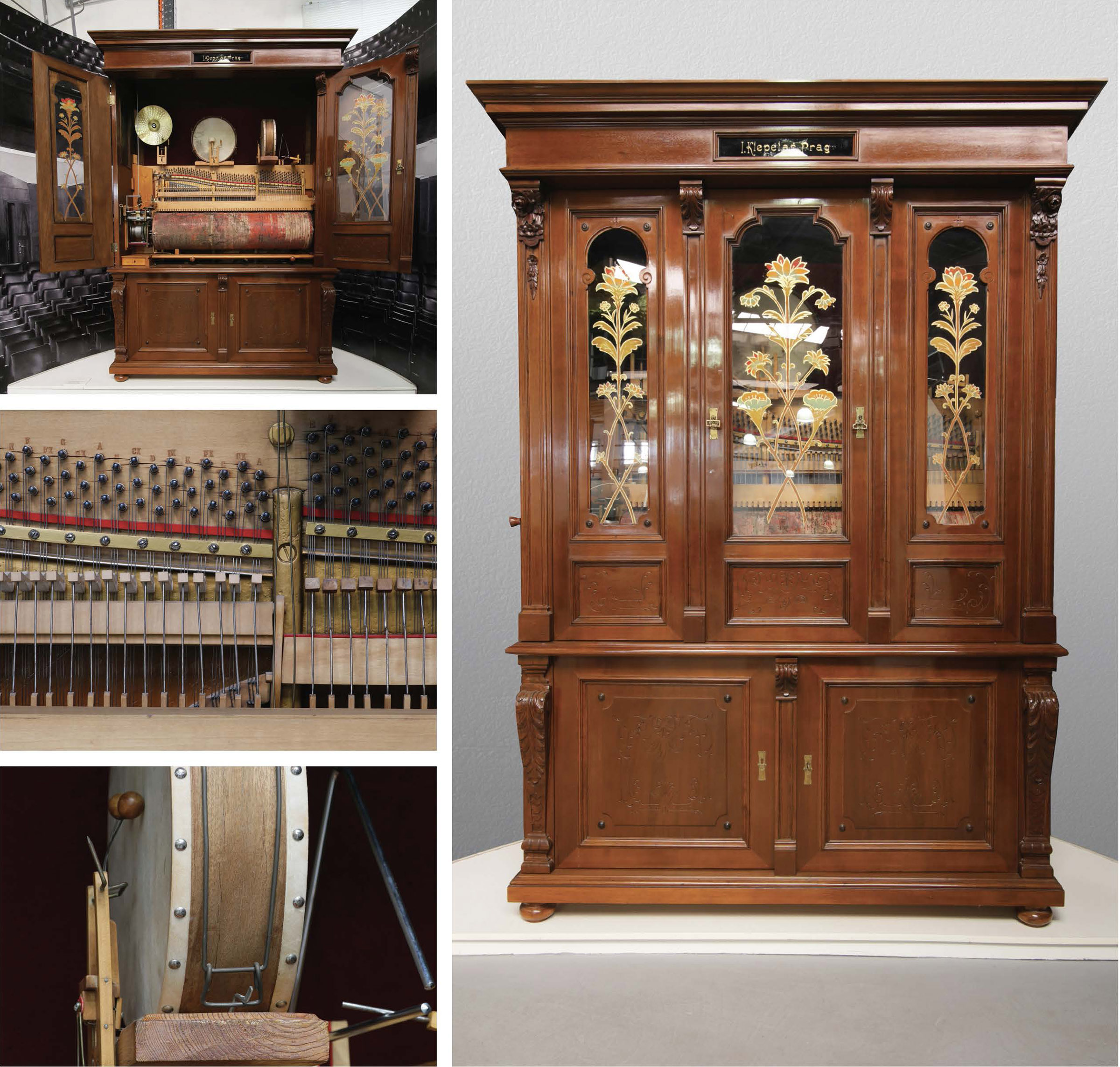Orchestra in a Closet
Orchestrion Klepetář
Manufacturer: František Jebavý
Place and time of production: Austria-Hungary, around 1860
Dimensions (cm): 155 . 65 . 115
Inventory number: Т:14.1
Automatic music machines — orchestrions, appeared in the 18th century. They consist of a group of instruments installed in a cabinet and cylinders with pins, the layout of which carries the musical notation. By striking the pins while the cylinder is turning, a system of levers transfers the notation to the instruments — piano mechanism, drum, a small snare drum, triangle and cymbals. Orchestrions were produced in various sizes and each cylinder stored from three to six melodies. The size of a cylinder was not proportional to the duration of the melody, so sometimes, the largest cylinders stored melodies that lasted no more than two minutes. Mechanism of the automatic music machine was wound up and set in motion by inserting a coin.
The orchestrions were quite popular and wide-spread in the 19th century. They were placed in public places, in waiting rooms at train stations, ice skating rings and bars.
Orchestrion Klepetář, was manufactured by František Jebavý’s workshop in Trutnov, today Czech Republic, around 1860. At that time, one of the most famous traders of mechanical music machines was Hynek Klepetář from Prague, whose mark is on the Museum’s exhibit. It was made in the Alt Deutsch style, decorated with woodwork and floral motifs. It was donated by Radio Television Belgrade and the Museum’s visitors can hear the recording of its original sound.




